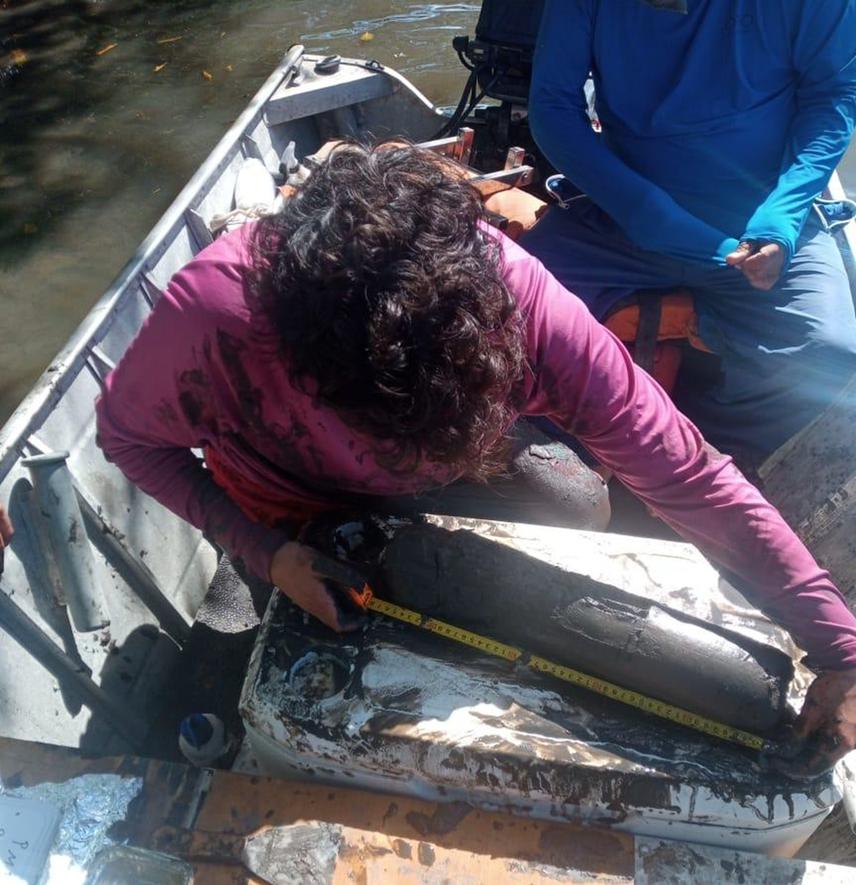Luiz Eduardo de Oliveira Gomes
Plastic is a highly persistent material that has been extensively released into the environment since 1950, resulting in its accumulation across a myriad of ecosystems for millennia, while potentially entangling many animals and accumulating over the food web. These impacts are higher near capitals and other big cities compared to pristine regions mainly by the irregular disposal of solid waste pollution that reaches the coastal zone. In this sense, this project will provide the first dataset about plastic impacts on mangrove forest structures along the Southeast Brazilian coast (the most populated region in Brazil) following international standards protocols. Also, we will quantify plastic sequestration on the same mangrove forests and nearby tidal flats following the vertical sediment layer, permitting global comparison among spatial and temporal scales.

Sediment cores sampled at the Piraquê Açú-Mirim estuary
We will determine the type and abundance of plastic debris in mangrove ecosystems with contrasting conservation level on the Southeast Brazilian coast (from pristine to highly polluted estuaries). Surveys will comprise the first assessment in Latin America of mangrove forest structures under contrasting plastic pressure; and the sampling of sediment core along with mangrove ecosystems (mangrove forests with nearby tidal flats) following the core vertical gradient (past to current plastic debris levels). We hypothesized that plastic pressure will reduce the number of mangroves plantules and living adult trees; while soil samples will present more plastic debris in topsoil compared to the bottom of the core. Also, the type of material that originates from the plastic debris will provide invaluable information about their sources to improve coastal management and develop mitigation actions.
We will communicate our results using the team's social media (e.g., personal sites, YouTube channels, and Twitter and Instagram pages), as well as during meetings with local NGOs, government agencies, and others interested in the theme. All this effort will give insight and stimulate ocean literacy and culture in Brazilian society, which directly improves mangrove conservation from local to international scales.
Header: Sampling stations at the Piraquê Açú-Mirim estuary.